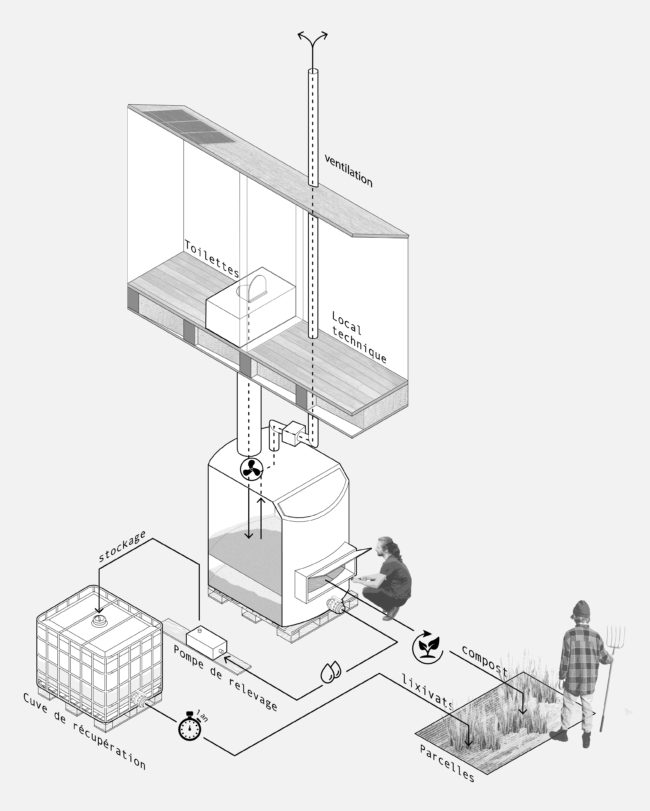 The Clivus Multrum, a dry composting toilet, is an installation that is part of an ecological approach to the recovery of human waste and the saving of natural resources (no water used). The compost created by the dry toilets will make it possible to fertilize the cultivated plots and thus avoid the use of industrial fertilizers that are harmful to the soil.
The Clivus Multrum, a dry composting toilet, is an installation that is part of an ecological approach to the recovery of human waste and the saving of natural resources (no water used). The compost created by the dry toilets will make it possible to fertilize the cultivated plots and thus avoid the use of industrial fertilizers that are harmful to the soil.
This system has the particularity of separating solid and liquid, generating two types of compost: on the one hand a rich compost and on the other hand leachate, a very effective fertilizer solution. By a gravity separation system, the liquids are recovered in the lower part of the composter. If a certain part will evaporate, the rest will be stored in two 1000L tanks. After a year of rest, the urine is transformed into an odourless, nutrient-rich saline solution for garden cultivation. The faeces, on the other hand, dehydrate under the effect of a continuous air flow generated by active ventilation and then decomposed into a rich compost, a true natural fertilizer.
This system has many advantages. First, because of the presence of sawdust directly in the tank, it is no longer necessary for users to throw it away after passing through. The separation of the flows allows a better management of the compost as well as a reduced maintenance (once a month for the tank and once a year for the liquids). Finally, the installation of active ventilation prevents unpleasant odours (rejected on the roof).
In addition, these toilets are part of an approach to saving natural resources, particularly water. It should be noted that on average 30% of the water consumption of a household comes from flushing toilets, between 6 and 10 L of drinking water are sent directly to the sewers with each use. In addition, the addition of water to our waste significantly increases the amount of pollution to be treated in our wastewater. It will take about 40L of water to remove 1.7L of waste. Dry toilets, by definition, do not use water and contribute to better management of our resources.


